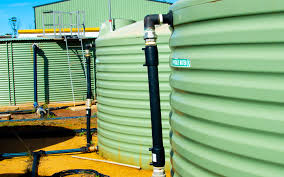Water tanks were traditionally constructed using materials that quickly degraded under atmospheric conditions such as weather fluctuations and UV rays. Today, however, high-quality poly tanks are crafted using plastics designed to resist degradation.
These tanks are specially designed to preserve the quality and safety of stored water, helping prevent a host of health issues such as digestive illness or respiratory infections.
Durability and Longevity
Durability is of utmost importance when selecting a water storage tank, with those made of FDA-approved materials having long lifespans to reduce replacement needs and the risk of leaks, which could pollute the environment or pose health concerns.
High-grade polyethylene (PE) tanks are highly corrosion-resistant and ensure that water stored remains pure; in contrast, stainless steel tanks are vulnerable to corrosion which could result in spilled-over contaminated water flooding into the soil and polluting its surrounding area.
PE used in these tanks is highly resistant to environmental factors like weather fluctuations and UV rays that degrade other materials. As such, these tanks remain intact and fully functional even under harsh conditions.
Rotationally-moulded tanks feature no seams that leak, unlike traditional stainless steel tanks with welds and rivets that may leak, jeopardizing water storage inside them.
These tanks are lightweight and easy to install, making them a fantastic choice for water reserves, fire prevention, rain or waste water collection and transportation using basic freight methods – unlike heavy steel or fiberglass tanks that require special handling – thus decreasing both shipping costs and overall lifetime costs of these tanks.
Health and Safety
Material choice of tanks can have significant ramifications on user health and safety. Steel tanks may contain harmful inclusions like lead; in contrast, PE water tanks are BPA-free and food grade safe – the perfect choice for storing drinking water.
PE tanks are rotational-molded, eliminating leaky seams found on steel and fiberglass tanks over time. Their superior design also makes cleaning and maintaining your tank or reservoir simpler – saving both money and effort over time.
PE tanks’ UV-stabilising properties protect them against solar radiation that degrades other materials over time, helping reduce algae growth in your tank and keep your water clean and clear.
Poly tanks make an environmentally-friendly choice, thanks to their non-toxic and biodegradable qualities, which enable recycling into new products without losing functionality or durability. This feature complements manufacturers and decision-makers who prioritize eco-friendly practices as part of their environmental commitment.
Sustainability
Water tanks can be an efficient solution for collecting rainwater or wastewater for household use, while simultaneously cutting energy consumption required for treating and pumping it – both benefits are good for both your wallet and the environment.
Plastic water tanks are non-toxic and do not release chemicals into the stored water, providing peace of mind to users and limiting health and safety issues associated with stored water being consumed or used for other tasks like drinking, cooking and laundry. Their nontransparency also minimizes sunlight exposure, helping prevent algae growth.
Plastic tanks are produced using less materials than their metal or concrete counterparts, thus reducing their environmental footprint and contributing to greener manufacturing practices. Furthermore, many are recyclable in accordance with sustainable and circular economy principles.
GRP tanks’ eco-friendliness is one of the main factors contributing to their widespread popularity. GRP tanks help with global sustainable practices by reducing carbon emissions and energy consumption while being recyclable and responsible end-of-life managed. Their lightweight design also makes transport cost-efficient and delivery costs reduced, with minimal maintenance requirements further decreasing long-term costs; all this makes GRP tanks an efficient investment while contributing towards greener planet.
Cost Efficiency in the Long Run
As opposed to galvanized steel tanks, which can become damaged through corrosion over time, high-quality polyethylene water storage tanks remain safe and functional for years. Their resilience minimizes replacement needs while protecting water sources from contamination due to rust or degraded material degradation.
Polyethylene does not leach harmful chemicals into stored water like metal does, making it an eco-friendly choice. Furthermore, its non-toxic nature ensures it’s an ideal health solution for homes and communities alike. Furthermore, its barrier prevents any polluted liquid from seeping through into the ground where it could ruin soil health and negatively affect local ecosystems.
Poly tanks are lightweight compared to their counterparts made of other materials, making transportation far simpler. Freight carriers can transport and offload them using standard methods without special training or equipment necessary; workers on a jobsite can quickly maneuver them to their final installation location.
Plastic process tanks can be tailored to suit specific industrial needs with their versatile construction. Their versatility enables cost efficiency in various applications and this benefit is especially helpful to businesses trying to maximize value while cutting spending. Furthermore, poly tanks naturally resist UV rays which degrade other materials over time – an added plus when it comes to outdoor water storage solutions. Furthermore, polyethylene is biodegradable and eco-friendly material which can easily be recycled into new products and materials.



